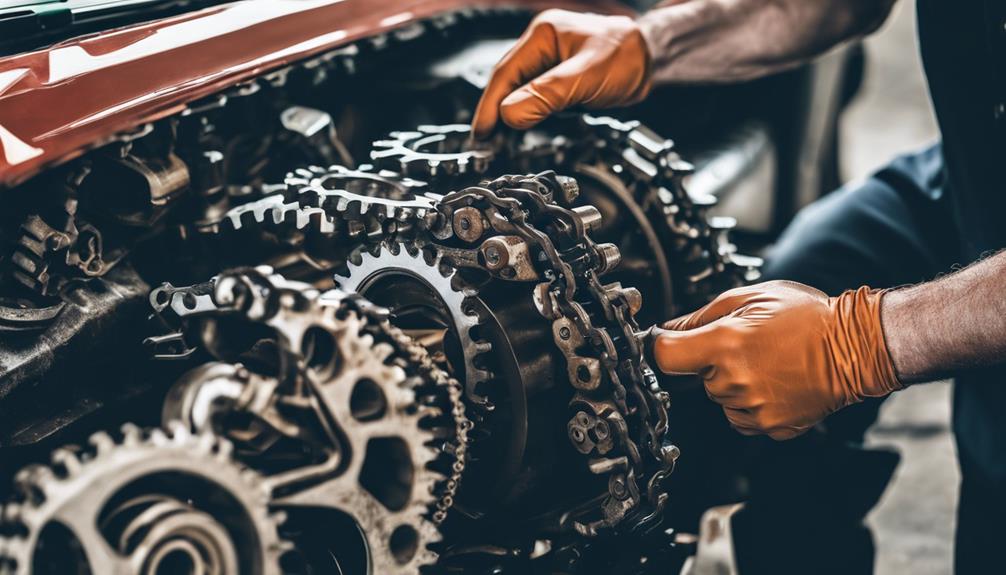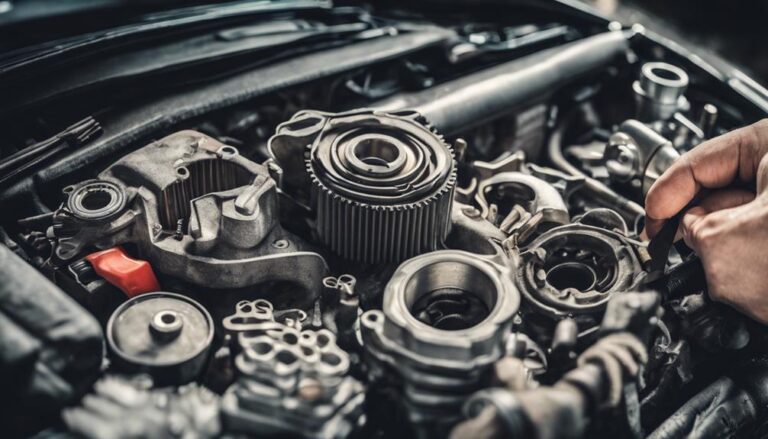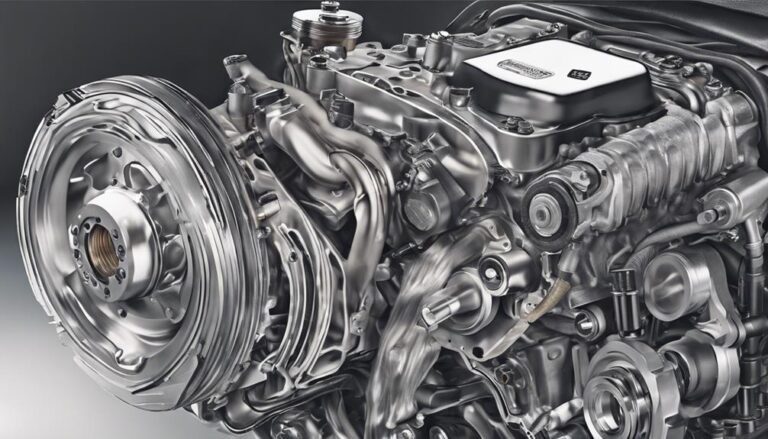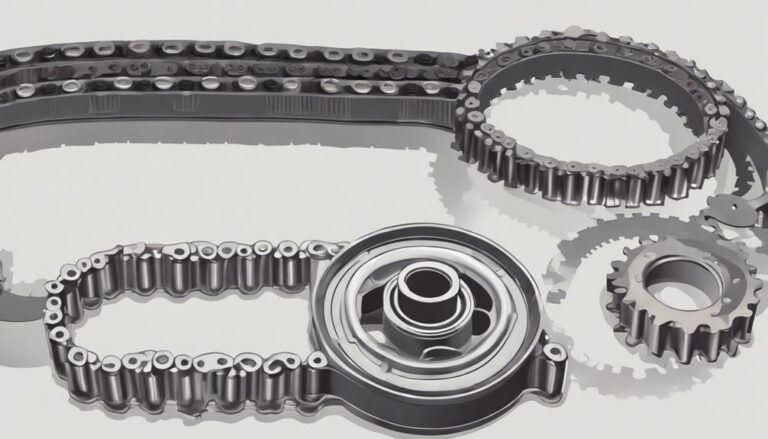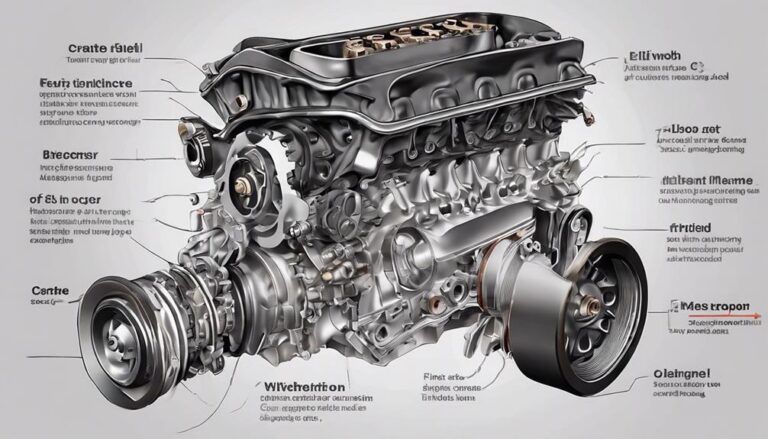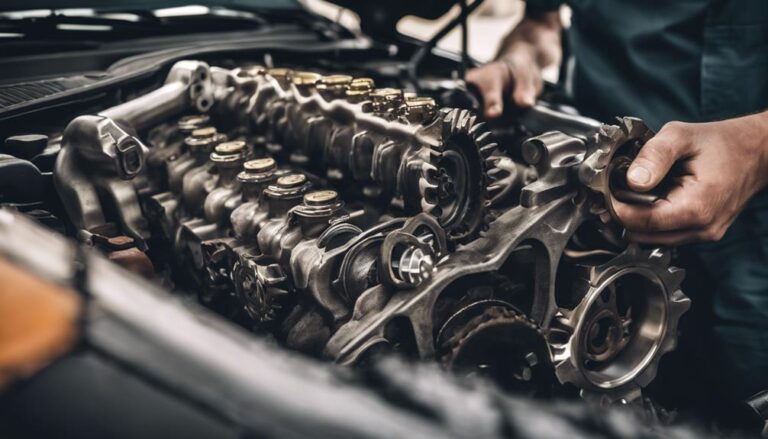Timing Chain Replacement: What You Need to Know
When it comes to your vehicle's timing chain, the saying 'an ounce of prevention is worth a pound of cure' certainly holds true. Understanding the ins and outs of timing chain replacement is vital for maintaining your engine's health and performance.
But did you know there's one crucial aspect many overlook that could save you from costly repairs down the road?
Key Takeaways
- Regular maintenance and early identification prevent catastrophic engine damage from timing chain wear.
- Timing chain replacement is recommended between 80,000 and 120,000 miles to maintain engine health.
- Ignoring timing chain wear can lead to costly repairs and engine performance issues.
- Professional replacement process involves proper alignment, tensioner installation, and meticulous care for optimal results.
Importance of Timing Chain Maintenance
Ensuring regular maintenance of your timing chain is paramount for the longevity and optimal performance of your engine. The benefits of timely maintenance can't be overstated. By adhering to a strict maintenance schedule, you can prevent catastrophic engine damage that may arise from a neglected timing chain. Proper maintenance not only safeguards your engine but also enhances its overall performance, ensuring a smooth and efficient operation.
The importance of maintenance lies in the fact that neglecting your timing chain can result in severe consequences such as engine misfires and poor idle quality. Regular oil changes using the correct oil type are essential for maintaining the health of your timing chain. By identifying and addressing any timing chain issues early on, you can save yourself from the hassle and expense of more extensive repairs down the line. Stay proactive in caring for your timing chain to enjoy a reliable and long-lasting engine performance.
Signs of Timing Chain Wear
When examining your vehicle for signs of timing chain wear, listen for any unusual rattling or slapping sounds emanating from under the hood. Here are some key signs to watch out for:
- Unusual Noises: Rattling or slapping sounds are often the first indicators of timing chain wear.
- Engine Performance: Look out for symptoms like misfiring, poor idle, or rough running, which can signal timing chain issues.
- Risk of Damage: If the timing chain jumps a tooth, it can lead to increased risk of engine damage, emphasizing the importance of timely inspection.
- Oil Analysis: Presence of metal shavings or chain pieces in the oil during an oil change can be a clear indication of timing chain wear. Engines with longer chains may also exhibit tensioner wear, pointing towards potential timing chain problems that need attention.
Regular diagnostic tests and inspection of chain tensioners can help in identifying timing chain wear early, preventing more severe engine issues in the future.
Recommended Timing Chain Replacement Interval
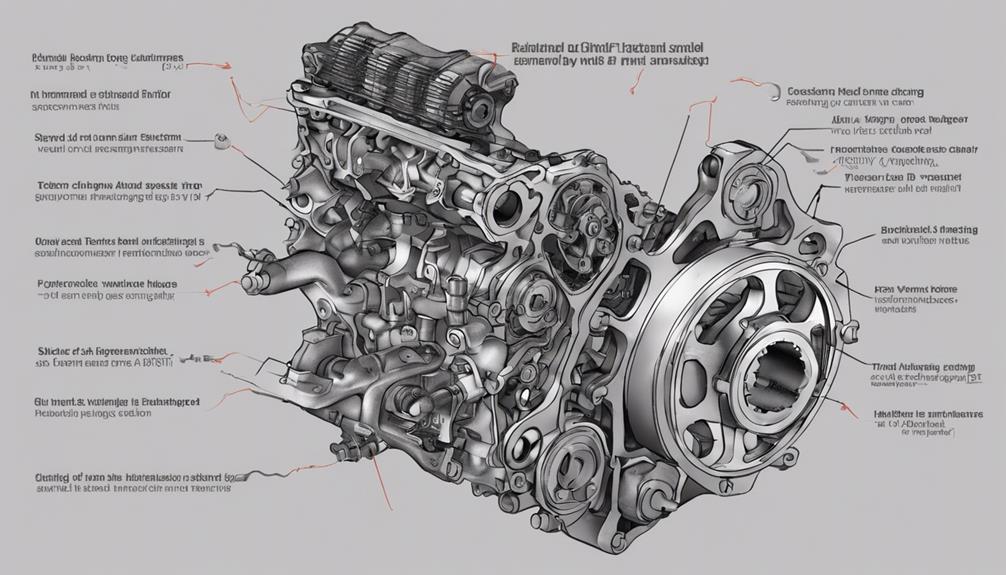
To ensure optimal engine performance and prevent costly repairs, the recommended timing chain replacement interval typically falls between 80,000 and 120,000 miles. Mileage considerations play a crucial role in determining when to replace the timing chain. High-mileage vehicles are more susceptible to timing chain issues and may require earlier replacement to avoid potential failures.
Regular maintenance is key in this regard. Keeping an eye out for warning signs of timing chain wear is essential, especially in older or high-mileage cars. DIY options for timing chain replacement exist but are intricate tasks best left to experienced individuals due to the complexity of the engine components involved.
Early identification of symptoms such as unusual engine noises, poor engine performance, or engine misfires is crucial in preventing complete timing chain failure. Being proactive and adhering to the recommended replacement interval can save you from more extensive and expensive repairs down the road.
Consequences of Delayed Timing Chain Replacement
Properly replacing a worn timing chain in a timely manner is crucial to avoiding catastrophic engine failure. When delayed, severe consequences can arise, impacting both your vehicle's performance and your wallet. Here's what can happen:
- Engine Damage: Delayed timing chain replacement increases the risk of chain breakage while driving. In interference engines, where the valves and pistons operate in the same space, a broken chain can lead to these components colliding, causing extensive engine damage.
- Costly Repairs: Ignoring a worn timing chain can result in significant repair costs. If the chain breaks, it can damage other engine parts, leading to expensive repairs that could have been prevented with timely replacement.
- Ineffective Solutions: Quick fixes or additives aren't reliable solutions for addressing timing chain issues. Timely replacement is the most effective way to prevent engine damage and avoid costly repairs.
- Maintenance Importance: Proper maintenance practices, such as regular oil changes, are crucial to preventing damage resulting from delayed timing chain replacement. Taking proactive steps can save you from dealing with the aftermath of a broken chain.
Professional Timing Chain Replacement Process
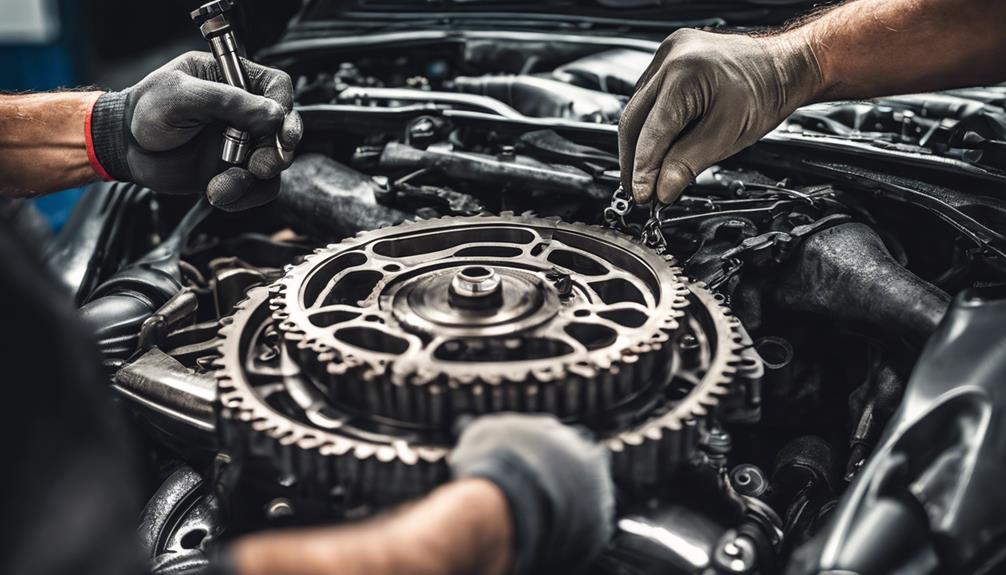
Replacing a timing chain professionally involves starting by disconnecting the negative battery terminal for safety precautions. Following this, removing the accessory drive components to gain access to the timing chain area is necessary. Cleaning the timing chain cover and mounting surface is crucial to ensure a proper replacement. The next step in the process is aligning the timing marks according to the engine's specifications to achieve accurate timing. After the timing chain is replaced, installing new tensioners is essential to guarantee proper tension and functionality.
| Professional Timing Chain Replacement Process | |
|---|---|
| 1. Disconnect negative battery terminal | 4. Clean timing chain cover |
| 2. Remove accessory drive components | 5. Install new tensioners |
| 3. Access timing chain area |
Frequently Asked Questions
What Else Should Be Replaced When Replacing Timing Chain?
When replacing a timing chain, make sure to also replace the timing chain tensioner for optimal performance. Inspect the camshaft sprockets to ensure they aren't worn. Neglecting these steps could lead to engine issues.
What Is Included in a Timing Chain Replacement?
When replacing a timing chain, you'll typically address not just the chain but also the tensioners, guides, and sprockets. Proper alignment and tensioning are key for optimal engine performance. Embrace the kit for ease.
Can I Replace Timing Chain Myself?
You can replace the timing chain yourself if you have advanced mechanical skills and access to necessary tools. DIY tips include following a service manual meticulously and ensuring precision during installation. If unsure, seek professional help.
Is There a Warning Before a Timing Chain Breaks?
You bet there are signs before a timing chain snaps! Rattling noises and engine misfires can give you a heads up. Preventive maintenance like checking for wear or metal bits in the oil can save you trouble.
Conclusion
In conclusion, ensuring timely timing chain replacement is crucial for maintaining your engine's performance and preventing costly damage. Don't let your engine go 'kaput' due to neglecting this essential maintenance task.
Follow the recommended replacement interval, listen for warning signs, and consult your service manual for guidance. Remember, a well-maintained timing chain is the key to keeping your engine running smoothly and efficiently.

